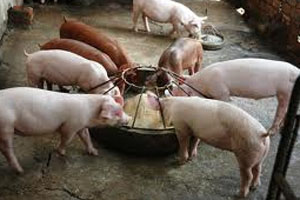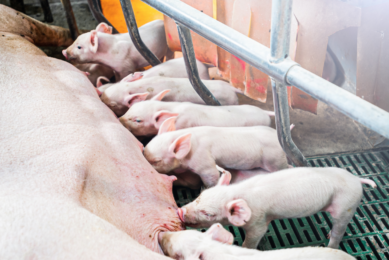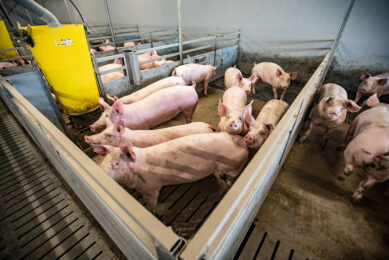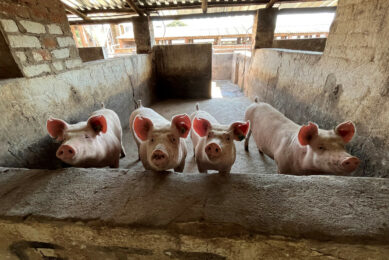Drop in feed prices brings profits back to pig production

Pig production in the United States is returning to profitability as feed prices fall, and a reduction in slaughter numbers seems to show that producers are noticing, according to Chris Hurt, Purdue Extension agricultural economist.
The 2012 drought devastated the US’s feed crops, resulting in the price of livestock feed to sky rocket, which in turn forced pig producers to send their animals to quickly to slaughter. With a large-yielding corn crop expected this year, feed prices have dropped, which has turned around the outlook for pig profits.
“This year, the hog outlook is almost the opposite of what it was last year,” Hurt said. “Feed prices, especially corn, have been falling sharply. The hog outlook is profitable, so producers are more likely to be retaining or building the breeding herd and weights are expected to increase as producers hold onto market hogs longer to gain profits on every pound.”
The most recent pig numbers available from the US Department of Agriculture, from the September Hogs and Pigs Report, showed that pig inventories are unchanged to somewhat larger compared to a year ago.
“Yet slaughter in recent weeks has been very low, seemingly indicating a divergence from USDA’s reading,” Hurt said.
Between mid-August and the end of September, slaughter rates dropped by an average of more than 5% and weekly slaughter rates have been down anywhere from 3-10%.
One explanation for the perceived difference in USDA’s inventory numbers and slaughter rates could be related to animal deaths from the porcine epidemic diarrhea virus, or PEDV. The USDA doesn’t track PEDV deaths, so Hurt said those numbers aren’t known for certain and it could be several months before hog markets are able to sort out the effects of the virus.
Another explanation for seemingly low slaughter rates could be attributed to the way the industry and markets evaluate herd numbers with year-to-year comparisons. Pigs went to market at higher-than-normal rates in 2012 because high feed prices meant the cost of production was higher than producers could sustain.
“What is being viewed as a very low slaughter in recent weeks might be due to an aberration in the slaughter numbers a year ago,” Hurt said. “The unusually high slaughter in the late-summer of 2012 was being driven by the drought. Record-high feed prices and large anticipated losses provided a grave outlook for the industry, and some producers began to adjust.”
Those adjustments included an increase in sow slaughter and, in some cases, total-herd liquidation a year ago. Now that the outlook has improved, breeding herd expansion has likely started and pigs are being held to higher weights. These factors mean that fewer animals are headed to market right now and prices have strengthened.
“Given low slaughter numbers, cash prices of hogs have been sharply higher than in the same period in 2012 when they averaged $55 (€40.55) per live hundredweight,” Hurt said. “With lower slaughter this year, they have averaged about $68 (€50.13) since mid-August.”
Higher cash pig prices combined with lower feed costs are the important drivers for a profitable outlook over the next 12 months. Hurt said eastern Corn Belt live-hog prices are expected to average in the mid-$60s in the final quarter of 2013 and the first quarter of 2014. Spring and summer prices are expected to move slightly higher.
With the cost of production estimated at $57 (€42,02) per hundredweight, Hurt said cash prices in the mid- to high-$60s (€44.23) would mean profits of more than $20 (€14.74) per head.
“These profits will enable producers to recover losses of about the same amount in the past year due to the drought,” he said.
Source: Purdue University, Chris Hurt











